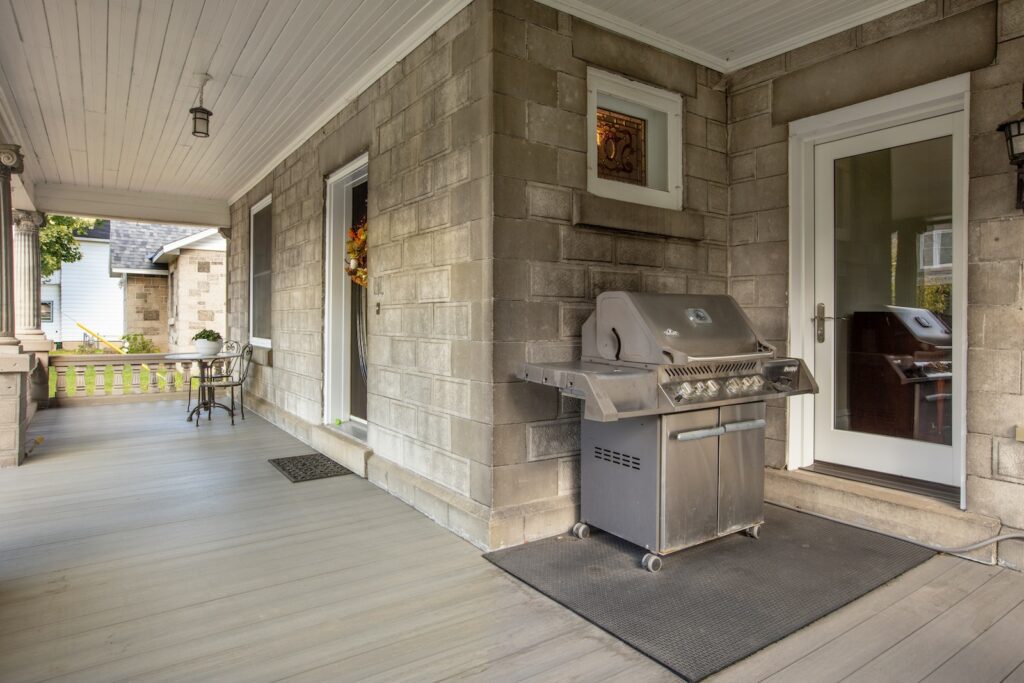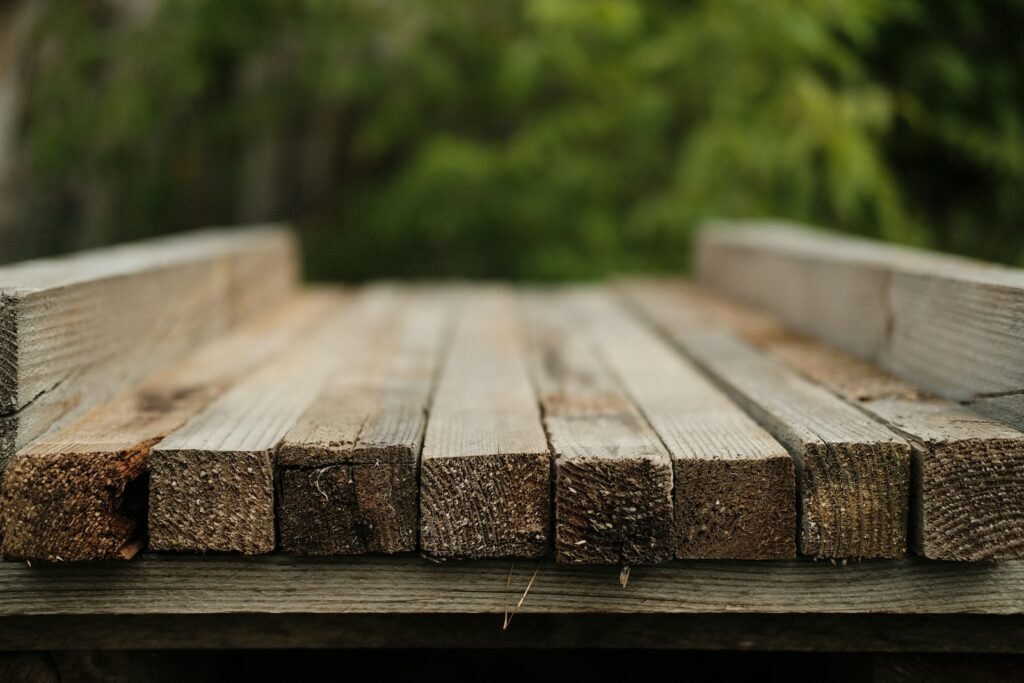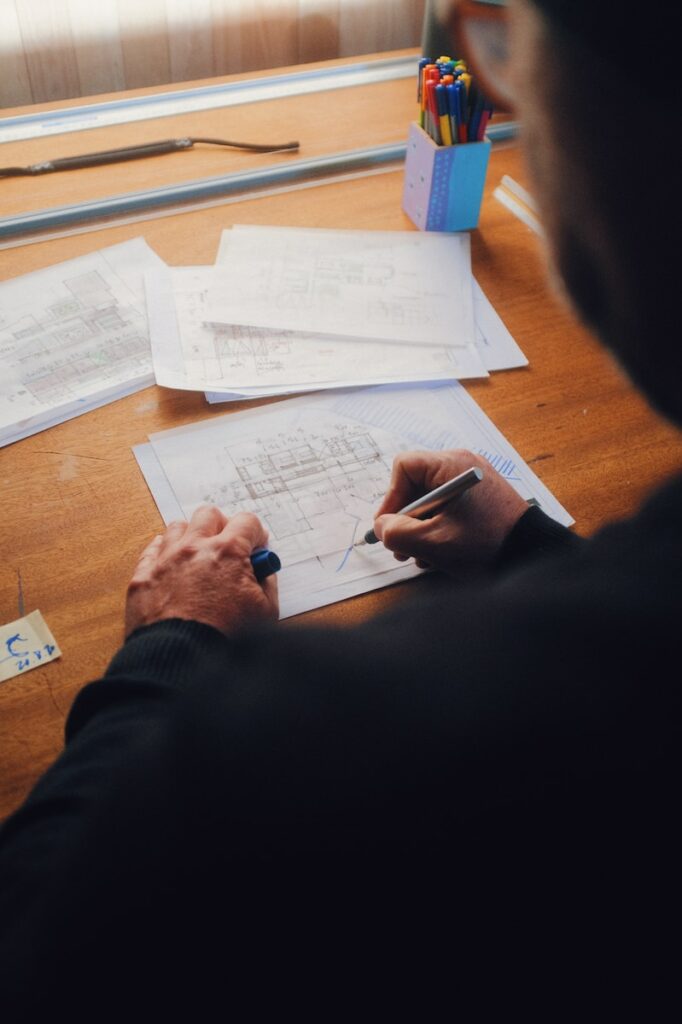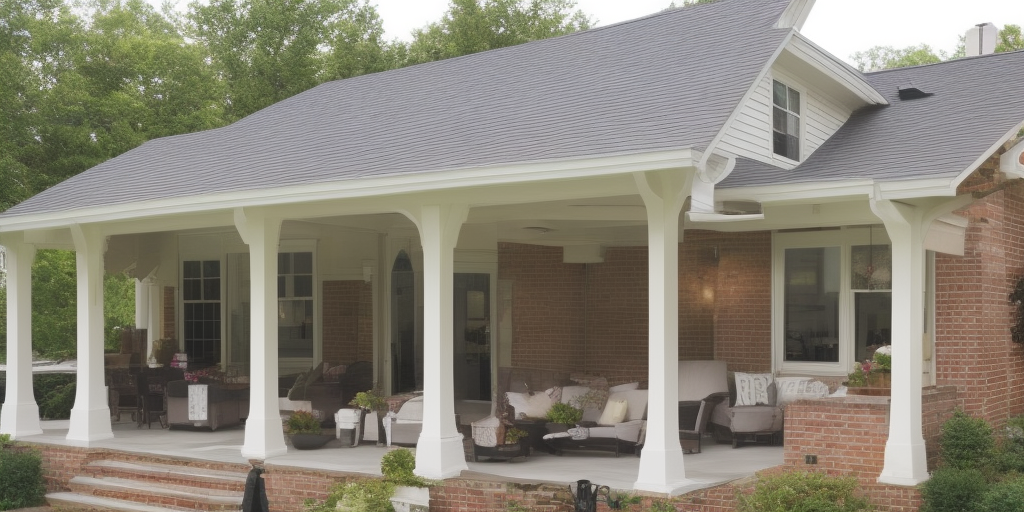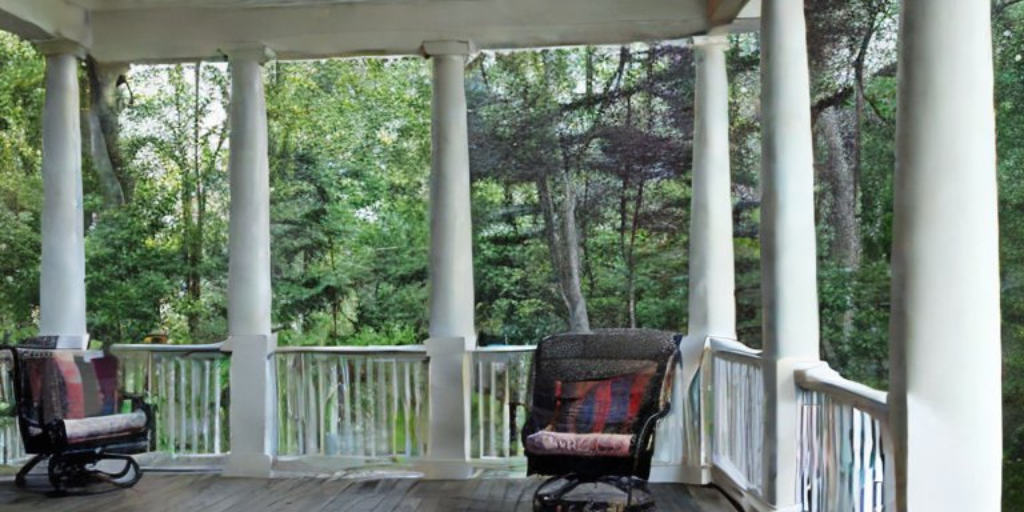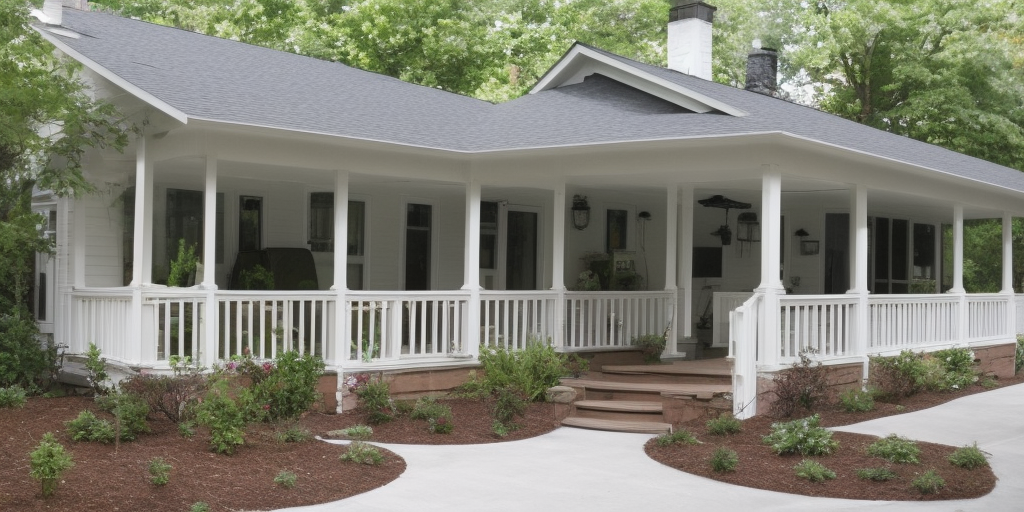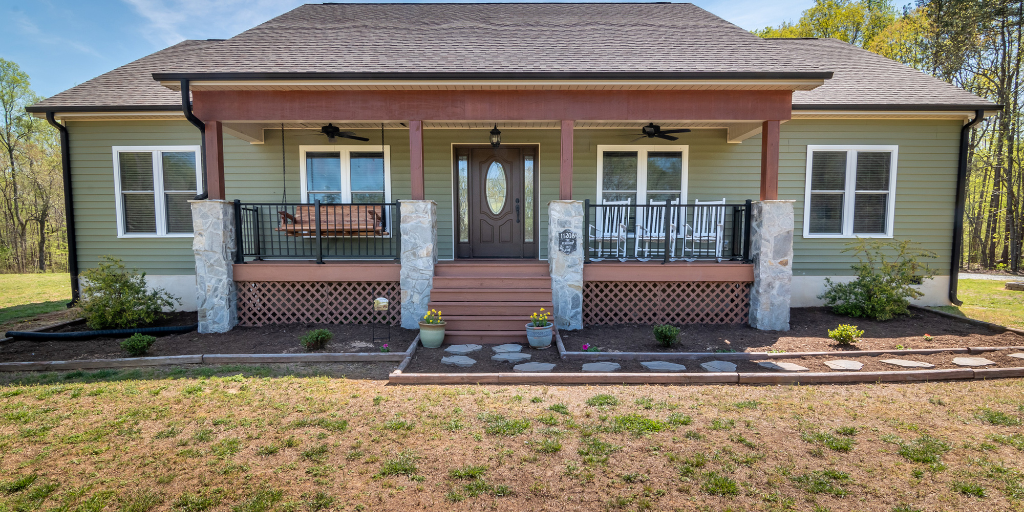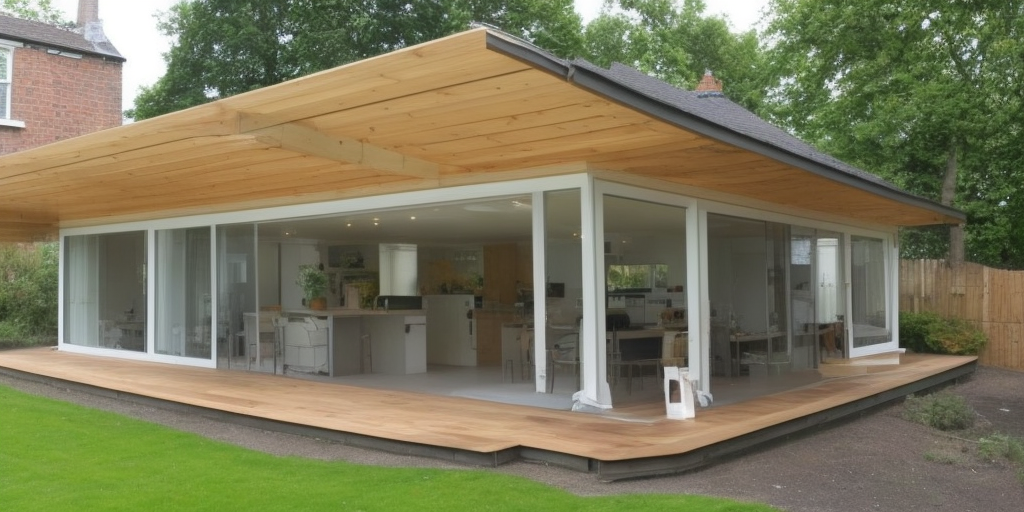Do you want to know how to plan a porch? A porch can be a wonderful addition to any home, providing a space for relaxing, entertaining, and enjoying the outdoors. But planning a porch can be overwhelming – there are so many factors to consider.
That is where we come in as we will share many simple but effective ways to help you plan the perfect porch for your enjoyment. As you will soon see, planning a porch doesn’t have to be something that overwhelms you, say check out the information below!
How to plan a porch?
Contents
- 1 How to plan a porch?
- 2 Front porch planning and construction
- 3 Porch layout and measurement guidelines
- 4 Porch material selection and cost analysis
- 5 Porch roof design and installation techniques
- 6 Porch foundation and structural considerations
- 7 Porch building permits and regulations
- 8 Porch decorating ideas and inspiration
- 9 Porch lighting and security planning
- 10 Porch furniture selection and arrangement
- 11 Porch landscaping and garden design
- 12 Porch renovation and remodeling planning
- 13 Porch safety and maintenance guidelines
- 14 How to plan a porch FAQs
- 15 Final remarks on how to plan a porch
Whether you’re looking to build a new porch or upgrade an existing one, it’s important to plan carefully to ensure that you create a space that meets your needs and complements your home’s style. In this guide, we’ll explore some tips and tricks for planning a porch that you’ll love spending time on.
Step 1: Determine the Purpose of Your Porch
The first step in planning your porch is to determine its purpose. Do you want a cozy front porch where you can relax with a book and a cup of tea? Or are you looking for a spacious screened-in porch where you can entertain friends and family? Once you know the purpose of your porch, you can start to think about its size, layout, and style.
Step 2: Consider Your Home’s Style
Your porch should complement your home’s style, whether it’s a classic Victorian or a modern farmhouse. Consider the architectural details of your home and choose a porch style that complements them. For example, a Craftsman-style home might look great with a wide, covered porch with tapered columns, while a Colonial-style home might be better suited to a more traditional front porch with white railings.
Step 3: Choose Your Materials
There are a variety of materials to choose from when building a porch, from traditional wood to low-maintenance composite decking. Consider the climate in your area and choose materials that are durable and weather-resistant. If you’re building a screened-in porch, you’ll also want to consider the type of screening material you use.
Step 4: Decide on the Layout
The layout of your porch will depend on its purpose and the size of your space. If you’re building a front porch, you may want to add seating areas and planters for added curb appeal. If you’re building a screened-in porch, you’ll need to decide on the placement of doors and windows. Consider the flow of traffic and choose a layout that maximizes your space and enhances your porch’s functionality.
Step 5: Add Personal Touches
Once your porch is built, it’s time to add personal touches that make it feel like home. Add comfortable seating, colorful pillows, and potted plants to create a cozy and inviting atmosphere. Hang outdoor lighting for evening entertaining, and consider adding a ceiling fan to keep cool on hot summer days.
Front porch planning and construction
When it comes to front porch planning and construction, there are several factors that you need to consider to ensure that your porch complements your home and meets your needs. Firstly, you need to decide on the purpose of your porch – is it for relaxing and entertaining, or for practical use such as storage or a workspace?
This will determine the size and layout of your porch. Additionally, you should consider the style of your home and match the porch accordingly. Once you have a clear idea of your porch’s purpose and style, you can start planning the construction process. This involves selecting materials, determining the cost, and finding a reliable contractor if necessary.
Here are some tips to keep in mind when planning and constructing your front porch:
- Ensure that your porch is structurally sound and complies with building codes and regulations
- Use durable and weather-resistant materials to ensure your porch lasts for years to come
- Incorporate design elements such as railings, pillars, and decorative features to enhance the aesthetic appeal of your porch
- Consider adding a roof or awning to protect your porch from the elements
- Pay attention to the details such as lighting and seating to create a welcoming and functional space.
Porch layout and measurement guidelines
When it comes to porch layout and measurement, careful planning is essential to ensure that your porch meets your needs and fits seamlessly with your home’s design. Firstly, you need to consider the size and shape of your porch. This will depend on your porch’s intended use and the available space.
Next, you need to determine the location of your porch – do you want it to be in front of your house or on the side? This will affect the layout and accessibility of your porch.
Here are some guidelines to help you with porch layout and measurement:
- Measure the available space accurately to ensure that your porch fits comfortably and doesn’t encroach on any property lines or building codes
- Determine the porch’s intended use and size accordingly
- Consider the traffic flow and accessibility of your porch, especially if you plan on using it for entertaining or relaxation
- Use visual aids such as sketches or blueprints to help you visualize the final design
- Don’t forget to factor in design elements such as railings and stairs when planning your porch layout.
Porch material selection and cost analysis
Choosing the right materials for your porch is crucial for both aesthetic and practical reasons. Some of the most popular porch materials include wood, concrete, brick, and composite decking. Each material has its own benefits and drawbacks, so it’s important to weigh these up when making your selection.
For example, wood is a classic and versatile material but requires regular maintenance, whereas composite decking is low maintenance but can be more expensive. Additionally, you should consider factors such as durability, weather resistance, and overall cost when selecting your porch materials.
Here are some tips to help you with porch material selection and cost analysis:
- Research different materials and their pros and cons to determine which one best suits your needs
- Consider the climate and weather conditions in your area and choose materials that can withstand these conditions
- Factor in the cost of the materials and the cost of installation when making your selection
- Don’t forget to consider the long-term maintenance costs of your chosen materials
- Consult with a professional contractor or builder for advice on the best materials for your porch.
Porch roof design and installation techniques
Adding a roof to your porch is an excellent way to protect it from the elements and add some extra visual appeal. When it comes to porch roof design and installation, there are several factors to consider, including the type of roof, the materials used, and the installation process.
For example, you can choose between a flat, shed, gable, or hip roof, each with its own unique benefits and drawbacks. Additionally, you should consider factors such as ventilation, insulation, and drainage when designing and installing your porch roof.
Here are some tips to help you with porch roof design and installation:
- Consider the style of your home and choose a roof that complements it
- Choose durable and weather-resistant materials such as metal or asphalt shingles for your porch roof
- Hire a professional contractor or builder to ensure proper installation and to comply with building codes and regulations
- Ensure adequate ventilation to prevent moisture buildup and ensure comfortable temperatures
- Incorporate gutter systems and downspouts to ensure proper drainage and prevent water damage to your porch.
Porch foundation and structural considerations
A solid foundation is essential for a sturdy and long-lasting porch. When planning your porch foundation, you need to consider the soil type, the size and weight of the porch, and the local building codes and regulations.
The most common porch foundations are concrete slab, piers, and footings. Concrete slab foundations are the most popular as they offer a solid base and are easy to install. However, if you have unstable soil or live in an area with seismic activity, piers or footings may be a better choice.
Here are some tips to help you with porch foundation and structural considerations:
- Hire a professional engineer to assess your soil type and determine the appropriate foundation type for your porch
- Choose foundation materials that are durable and can withstand the elements, such as concrete or masonry
- Ensure that the foundation is properly anchored and reinforced to withstand wind, rain, and seismic activity
- Follow local building codes and regulations when constructing your porch foundation to ensure safety and compliance.
Porch building permits and regulations
Before starting any porch construction or renovation project, it’s essential to obtain the necessary permits and comply with local building regulations. Building codes and regulations vary from state to state and even from city to city, so it’s important to do your research and ensure you’re following the correct guidelines. Failure to comply with building regulations can result in fines, delays, and even legal action. Additionally, some neighborhoods or homeowner associations may have specific rules regarding porch construction, so be sure to check these as well.
Here are some tips to help you with porch building permits and regulations:
- Research local building codes and regulations to ensure compliance before starting any porch construction or renovation project
- Obtain the necessary permits and inspections from local authorities before starting construction
- Follow the guidelines and regulations carefully to ensure safety and compliance
- Consider hiring a professional contractor or builder who is familiar with local building codes and regulations to ensure compliance and avoid delays or fines.
Porch decorating ideas and inspiration
Once your porch is constructed, it’s time to decorate and make it your own. There are countless ways to decorate your porch, from adding furniture and decor to incorporating plants and lighting. The key is to create a welcoming and comfortable space that reflects your style and personality. You can choose from a variety of themes, such as rustic, coastal, or modern, and incorporate elements that fit with your chosen theme.
Here are some tips to help you with porch decorating ideas and inspiration:
- Choose furniture and decor that is both functional and stylish, such as a porch swing, comfortable seating, and weather-resistant rugs and pillows
- Incorporate plants and flowers to add color and life to your porch, such as potted plants, hanging baskets, or a vertical garden
- Use lighting to create a warm and inviting atmosphere, such as string lights, lanterns, or sconces
- Consider adding seasonal decor or changing up your decor throughout the year to keep your porch feeling fresh and inviting
- Get creative and have fun with your porch decor, using elements that reflect your personal style and interests.
Porch lighting and security planning
Proper lighting and security measures are important considerations when planning your porch.
Here are some tips to help you make the most of these features:
- Use outdoor-rated fixtures and bulbs to ensure that your porch lighting can withstand the elements. LED bulbs are a great choice because they are energy-efficient and have a long lifespan.
- Install motion sensor lights to provide added security and deter potential intruders. These lights will turn on when someone approaches the porch, alerting you to their presence.
- Consider adding a security camera to your porch to provide an extra layer of protection. Many cameras are available that can be accessed remotely via a smartphone app, allowing you to keep an eye on your porch even when you’re not home.
Remember, a well-lit and secure porch will not only provide peace of mind, but it will also make the space more functional and enjoyable for you and your guests.
Porch furniture selection and arrangement
Choosing the right furniture for your porch is essential to creating a comfortable and functional space. Here are some tips to help you select and arrange your porch furniture:
- Choose furniture that is designed for outdoor use and can withstand the elements. Materials like wicker, teak, and metal are great choices because they are durable and weather-resistant.
- Consider the size and shape of your porch when selecting furniture. If your porch is small, opt for compact furniture that won’t take up too much space. If your porch is large, you can afford to be more generous with your furniture choices.
- Arrange your furniture in a way that promotes conversation and relaxation. A seating area with chairs and a table is a great choice, as is a porch swing or a chaise lounge for solo relaxation.
- Add some decorative elements like throw pillows, blankets, or an outdoor rug to add some personality and comfort to your porch.
Remember, your porch furniture should be comfortable and inviting. Choose pieces that you love and that fit your personal style, and arrange them in a way that encourages relaxation and conversation.
Porch landscaping and garden design
Landscaping and gardening can help transform your porch into a beautiful and relaxing oasis. Here are some tips to help you design and maintain a beautiful porch garden:
- Choose plants that are appropriate for your climate and the amount of sunlight your porch receives. Some popular choices include succulents, herbs, and small flowering plants like petunias or impatiens.
- Consider adding some vertical elements to your porch garden, like trellises or hanging baskets, to add visual interest and make the most of your space.
- Use pots and containers to make your porch garden portable and easy to maintain. This also allows you to move your plants around to create new arrangements and designs.
- Incorporate seating and decorative elements like sculptures or garden ornaments to add some personality and charm to your porch garden.
Remember, porch gardening can be a fun and rewarding hobby, but it does require some effort and maintenance. Be sure to water and fertilize your plants regularly, and prune them as needed to keep them healthy and thriving.
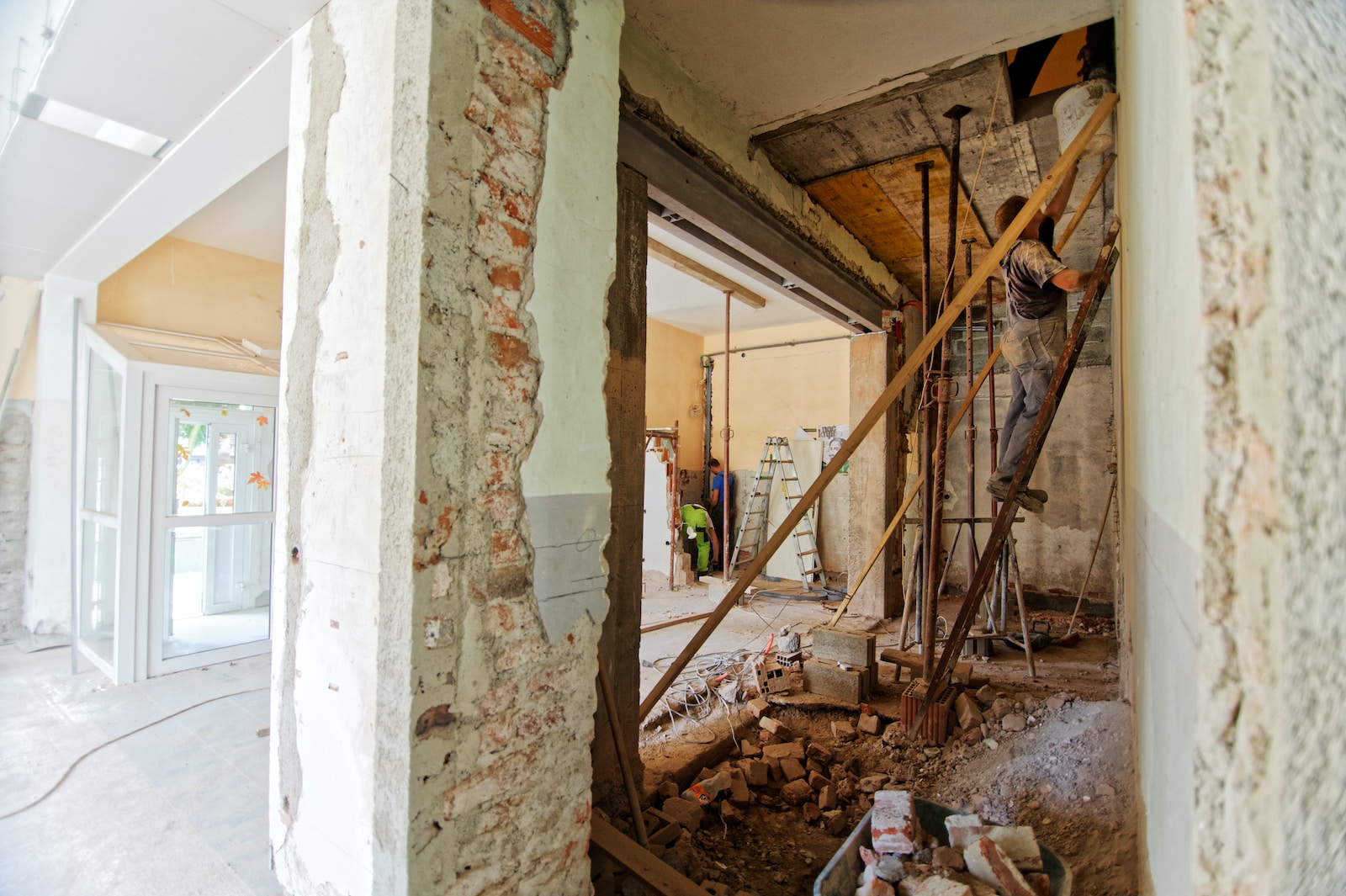

Porch renovation and remodeling planning
If you’re planning a porch renovation or remodel, it’s important to start with a clear vision of what you want to achieve. Begin by assessing the existing structure and determining what changes need to be made. This could include replacing damaged or outdated materials, or expanding the size of the porch. Consider your budget and what changes will give you the most value for your investment.
When selecting materials for your renovation, consider durability, maintenance requirements, and the style of your home. For example, if you have a Victorian-style home, a wooden porch with intricate detailing would complement the architecture. Plan for proper insulation and ventilation to ensure that your porch is comfortable year-round.
Porch safety and maintenance guidelines
When it comes to porches, safety and maintenance should always be a top priority. A well-maintained porch not only enhances the overall appearance of your home but also provides a safe and comfortable space for you and your family to enjoy.
Here are some guidelines to keep in mind to ensure the safety and longevity of your porch:
Regularly inspect your porch for any signs of damage, such as rotting wood or rusted nails. Fix any issues as soon as possible to prevent further damage.
Keep your porch clean and free of debris, such as fallen leaves or branches. This can prevent slips and falls, especially during wet or icy weather.
Make sure your porch is properly ventilated to prevent moisture buildup, which can lead to rot and mold growth.
Check the stability of your porch regularly, especially after severe weather events. Make sure the foundation and support structures are secure and not leaning or sagging.
Consider adding safety features, such as handrails, non-slip surfaces, and adequate lighting to ensure visibility at night.
By following these guidelines, you can ensure that your porch remains a safe and enjoyable space for years to come.
In addition to safety, regular maintenance can also help extend the lifespan of your porch. Here are some tips for keeping your porch in top shape:
Clean your porch regularly with a mild soap and water solution to remove dirt and grime buildup.
Apply a protective sealant or paint to prevent moisture damage and extend the life of your porch.
Trim any nearby trees or bushes that may be encroaching on your porch to prevent damage from falling branches or leaves.
Replace any damaged or worn out components, such as decking boards or railings, as soon as possible to prevent further damage.
Consider hiring a professional for more complex maintenance tasks, such as roof repair or electrical work.
By taking a proactive approach to porch maintenance, you can save time and money in the long run while also ensuring the safety and comfort of your family.
How to plan a porch FAQs
Planning a porch can be an exciting project, but it can also come with many questions and uncertainties. To help you navigate through the process, here are some frequently asked questions related to planning a porch. From the average cost to building permits, these FAQs will provide you with valuable information to ensure your porch planning process goes smoothly.
How much does it cost to build a porch?
The cost of building a porch will depend on a variety of factors, including the size of your space, the materials you choose, and the complexity of the design. According to HomeAdvisor, the average cost to build a porch ranges from $7,500 to $25,000.
Do I need a permit to build a porch?
In most cases, you will need a building permit to build a porch. Check with your local building department for specific requirements in your area.
Can I build a porch myself?
If you have experience with carpentry and building, you may be able to build a porch yourself. However, it’s important to follow local building codes and regulations, and to ensure that your porch is safe and structurally sound.
Final remarks on how to plan a porch
This is how to plan a porch and it doesn’t have to become overwhelming. With a little bit of research and careful consideration, you can create a space that you’ll love for years to come.
Whether you’re looking to add a cozy front porch to your home or a spacious screened-in porch to your backyard, taking the time to plan and design your space can make all the difference. So why not start planning your porch today and see what kind of amazing space you can create?
